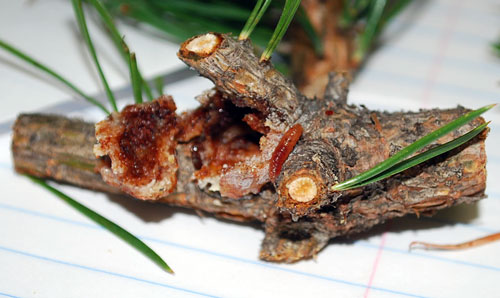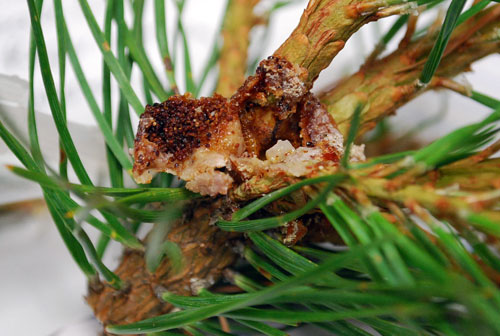Northern pitch twig moth: An unusual pest of Scotch pine
Feeding by northern pitch twig moth larvae can kill the tips of branches or terminal shoots of Scotch pine by girdling the inner bark.
Northern pitch twig moth or pitch nodule maker, Retinia (= Petrova) albicapitana (Lepidoptera: Olethreutidae), is an unusual pest of pine. The larvae of this moth form brownish, hollow pitch blisters usually in branch junctions. The larvae remove small amounts of bark in the crotches of the young branches that may kill or deform a few branches of the stem tips. Sometimes the growth may be discolored and deformed beyond the blister. Recently, a grower reported finding extremely large numbers in a field of 3- to 4-foot Scotch pine.

Northern pitch
twig moth larvae.
It takes about two seasons for this insect to complete a full life cycle. During the first year, the young larva constructs a small, blister-like nodule on a growing tip and overwinters there. The following spring, the larva moves to a twig notch and forms a larger nodule – this is the one that is normally seen on the tree. After pupating, the moth emerges, lays eggs, and the cycle is repeated.
Insecticides are not effective because the larvae are protected inside the blister. The best thing to do is to break open the pitch blisters and crush the larvae when you find them. You may need to do some corrective pruning to remove any flagged or broken branches or stake up a side shoot if the leader is damaged.



 Print
Print Email
Email





